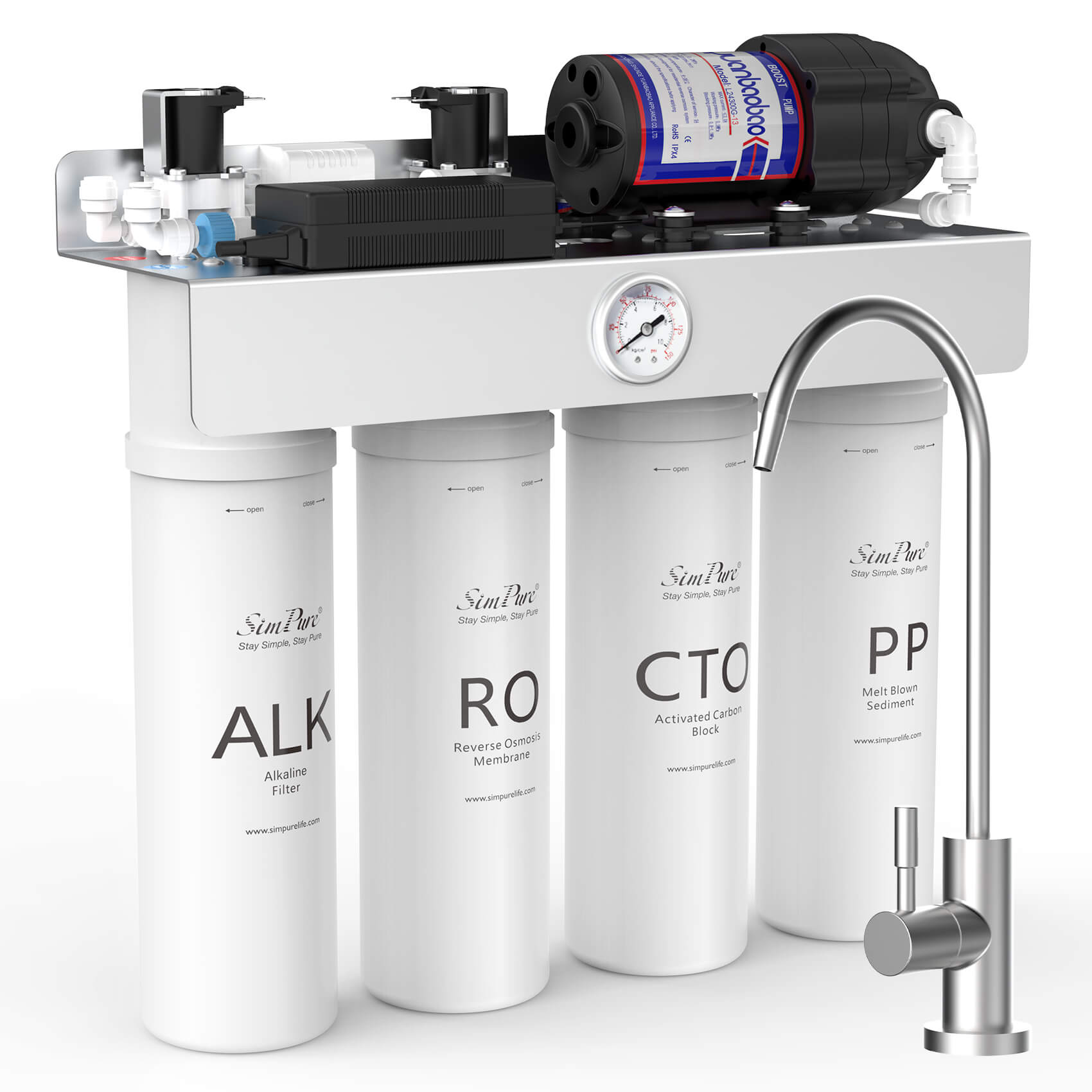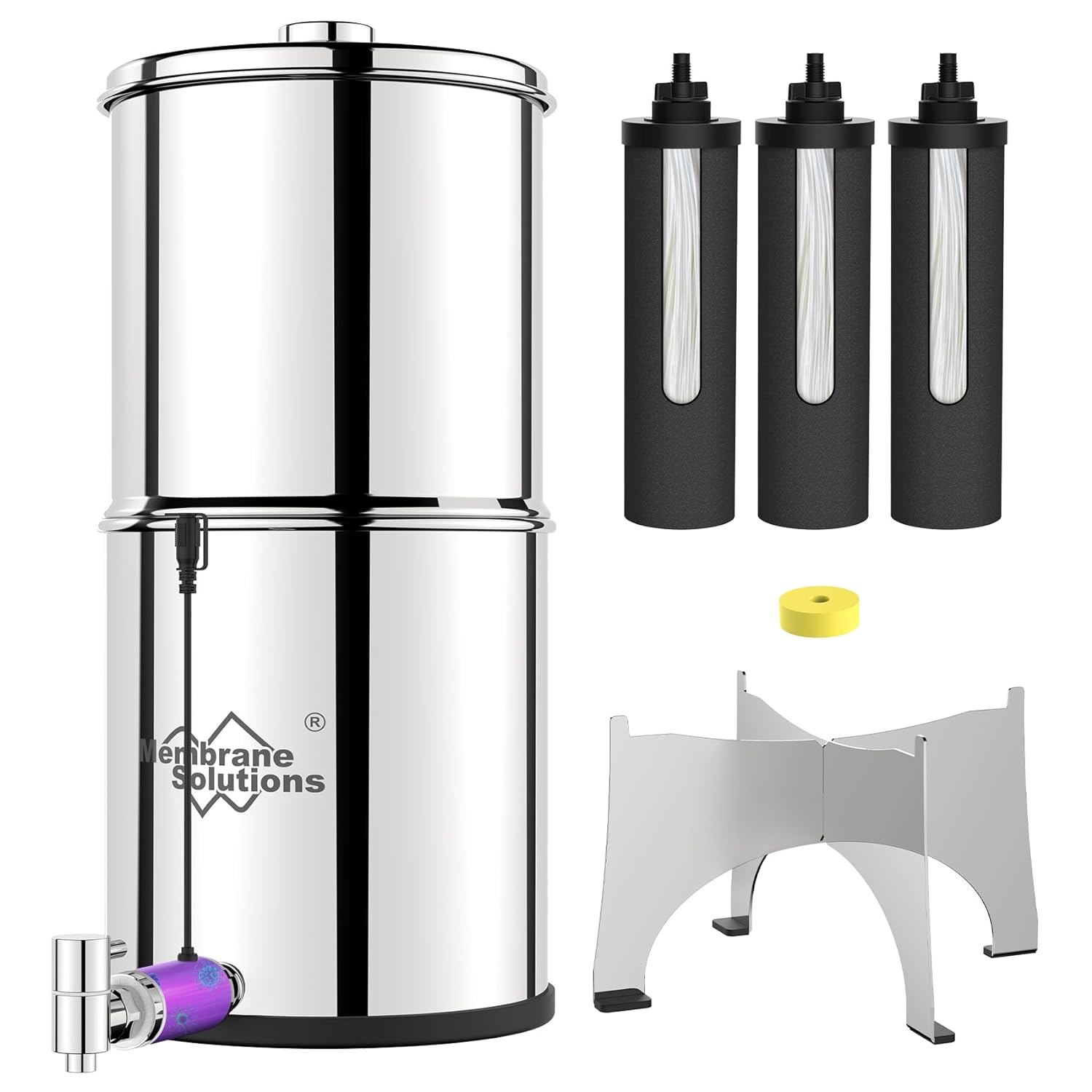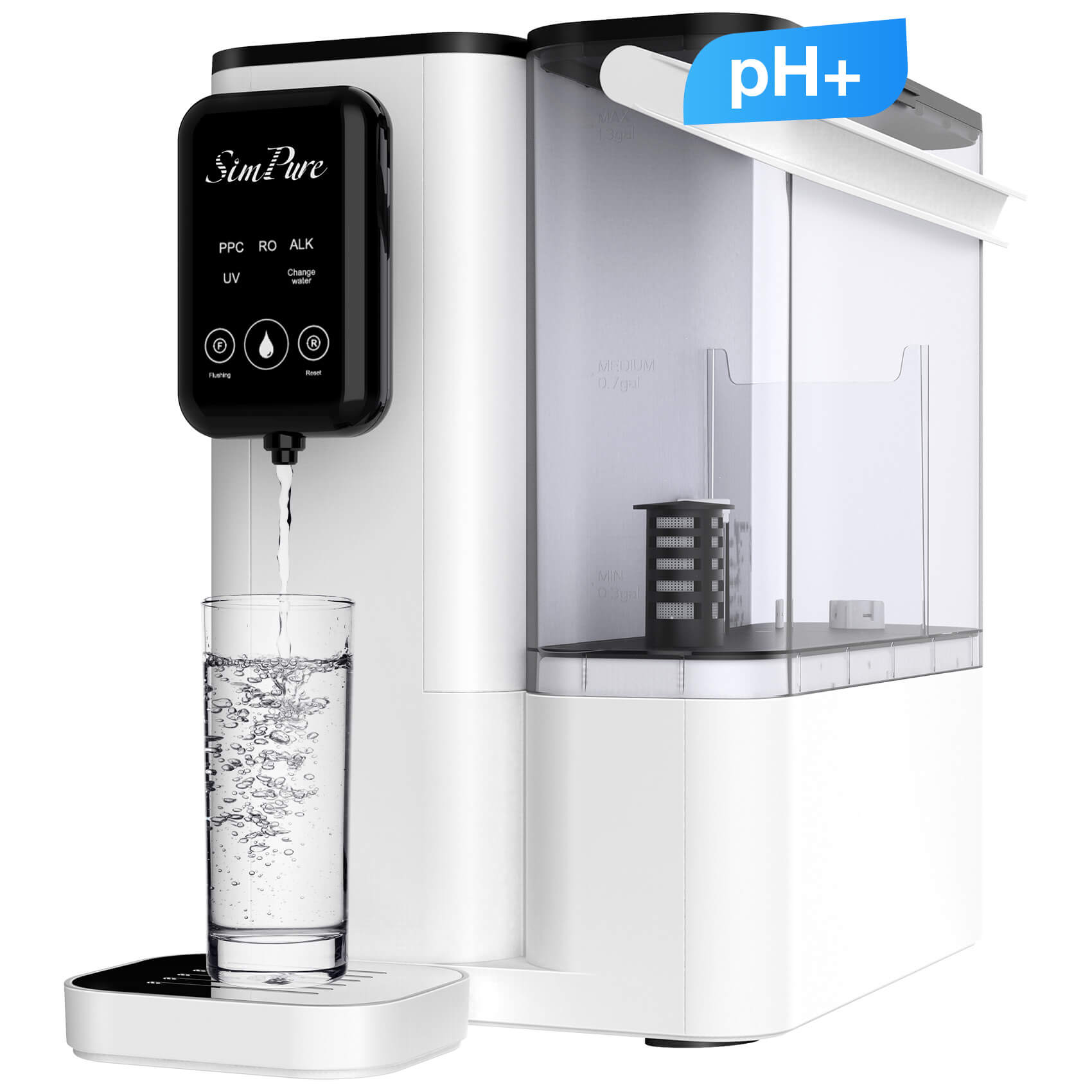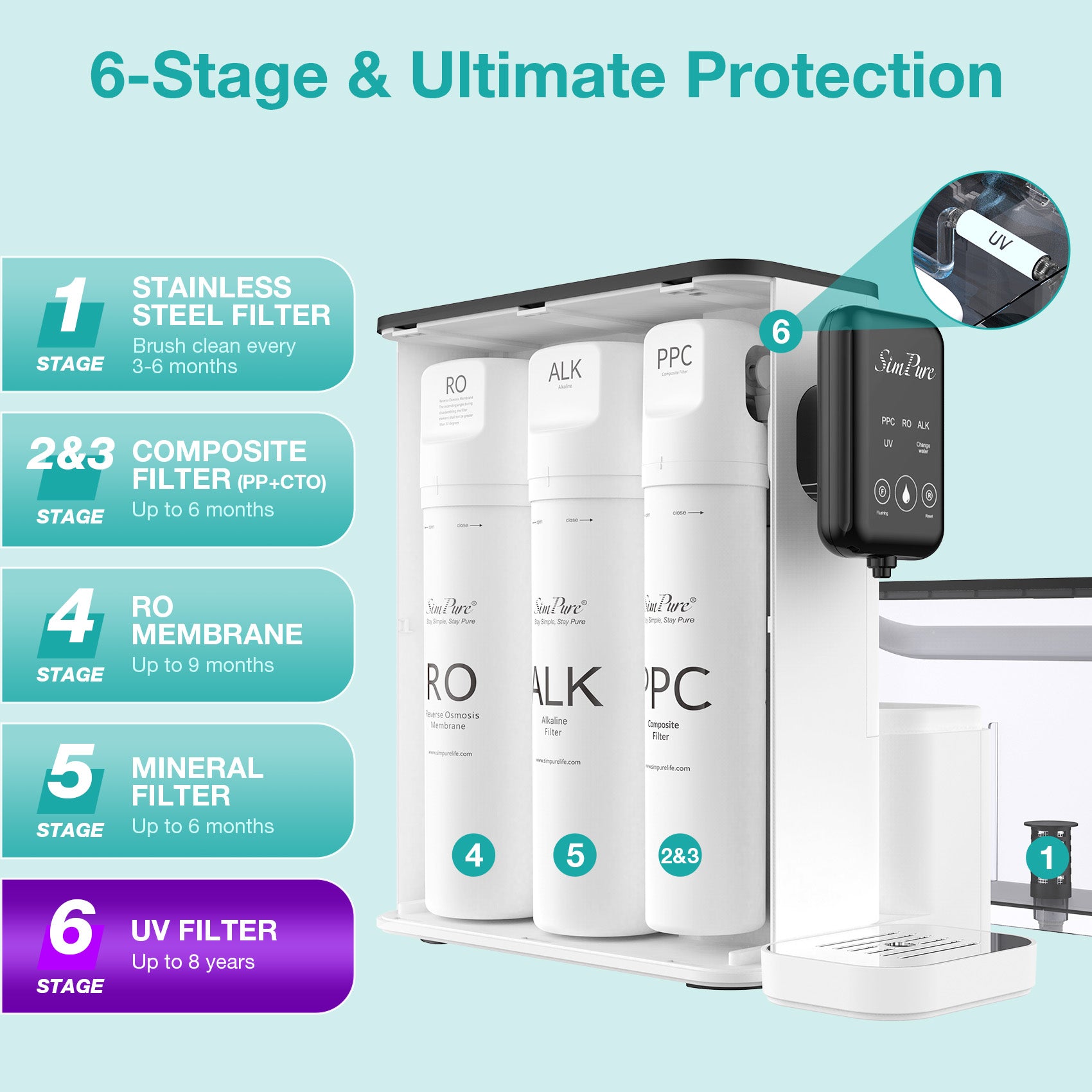When it comes to water filtration in your home, reverse osmosis systems stand out as a top choice. However, it's crucial to remember that all RO systems, regardless of their quality, require regular sanitization. This not only keeps the water clean but also significantly reduces the risk of disease-causing bacteria.
The most crucial part is timely filter and membrane replacement, as dirt accumulates over time during use. If they are not replaced as recommended, the system will be clogged and damaged. Other components, such as storage tanks, faucets, tubing, and fittings, require periodic cleaning and disinfecting to increase the system's efficiency. Let's dig deeper into how to sanitize an RO system at home.
Can I Sanitize the RO System?
Yes, it is highly recommended to sanitize your RO system at least once a year, or even better, once every six months. This includes replacing pre-filters that capture larger sediments, reverse osmosis membranes that filter dissolved solids, and post-filters that remove odors and taste. Additionally, you need to sanitize storage tanks, all connecting tubes and fittings, dispensers and faucets, and flow restrictors.
It's important to understand that all filters and membranes within your RO system undergo wear and tear as they filter out toxic and unwanted materials. Unclean filters can lead to a tenfold increase in illness-causing bacteria compared to normal tap water. Therefore, it's crucial to thoroughly clean your RO system, including the reverse osmosis water filters that should be replaced at least once every 12 months. For more detailed instructions, consult the owner's manual for your specific reverse osmosis system replacement.
Proper care of your reverse osmosis system is crucial so that you can enjoy its service for a long time and continue to have water free of impurities. But how to sanitize the reverse osmosis system? Keep on scrolling!
Tools and Materials You Will Need
Brace yourself up and get your hands on the following tools:
-
Clean sponge or cloth
-
Gloves
-
Safety goggles
-
Bucket or container
-
Sanitizing Solution
-
Liquid soap
You will be required to have an RO-compatible sanitizing solution (e.g., diluted bleach, hydrogen peroxide, or peracetic acid), or you can purchase an NSF-approved sanitizing solution. Make sure to read the manufacturer's recommendation.
Step-by-Step Guide on How to Sanitize Your RO System
If mold exists outside the system or the tank, now is the time to disconnect and wash the system to remove all the mold. Here is a step-by-step procedure on how to sanitize an RO system.
1. Preparing Your RO System for Sanitization
Before you start, prepare the sanitizing solution with RO cleaners or sanitizers such as bleach or hydrogen peroxide.

To ensure that water does not flood the floor, ensure that there is no water running towards the location of the reverse osmosis system before switching it on. If your RO is installed on a refrigerator or ice maker, turn off the water supply. Turn on the faucet to release pressure and empty the storage tank. Check if filters or membranes need replacement.
2. Cleaning the Filter Housings
Open all the filter housings and remove the filters from all of them. There should not be any post or pre-filters or membranes in line with your system throughout the sanitization process except for the pre-filter (sediment housing). Clean the filter housings using warm water with a few drops of soup liquid. Thoroughly rinse before inserting new ones.
3. How to Sanitize the Reverse Osmosis Tank
When used with an RO system, storage tanks are also called pressure tanks. They should be drained completely once every two weeks to assist the membrane with the necessary pressure to flush out dissolved impurities.
Sanitizing is done less frequently than draining, i.e., every 12 months. Here is how to sanitize the reverse osmosis storage tank: Turn on the faucet and release the pressure until water flow ceases. Add the bleach or NSF-approved sanitizing system to the tank for 20 minutes. Turn on the water and let it run, ensuring the tank is free from all dirt and debris.
4. Sanitizing Faucets and Dispensers
Dispensing faucets must be cleaned to prevent recontamination. Detach the faucet and soak it in the sanitizing solution. Wash it properly and reattach it.
5. Flushing the Drain Line
Identify the drain line connecting the RO unit to the sink drain. After disconnecting, check for potential clogging, accumulation, or coils. Pull out the disconnected drain line and insert one pipe end into a bucket or sink. Hose down or attach a faucet to the drains to ensure you wash the lines with clean water. Pour the sanitizing solution into the drain line for 15 minutes. As the RO system is flushed, reconnect the drain line.
6. Cleaning the Tubing and Connections
After safely disassembling the tubing and connections from the system, submerge all the parts in the sanitizing solution. Please keep a note of where each piece goes to make reassembly a less complicated process. Allow immersion for 20 minutes to ensure that all bacteria or mold is killed. Now, rinse with clean water and ensure no signs of solution are left. A small cleaning brush is appropriate for small or hard-to-reach areas.
7. Installing New Replacement Filters and Flushing
If you are replacing filters with new ones, now is the right time to discard the previous filters. When installing new filters, allow the water to circulate through the entire system. Find out more benefits of flushing a new filter here!
8. Reassembling Your RO System
As soon as the drain line is clean and the RO system is flushed, reconnect the drain line. Reassemble all the tubes and pipes and check for any signs of leaks. Let the water flow for several minutes. Refill the storage tanks. Once the system is clean without any residual smell, debris, or sanitizing solution, it is fit for everyday use. Now, reconnect the RO to the ice maker or refrigerator.
Best SimPure RO Systems, Easy Maintenance
Investing in a reverse osmosis system may seem like a big decision, but when it comes to the health and well-being of your family, it's a worthy one.
If you're looking for an RO system that's not only effective but also easy to maintain and clean, consider SimPure RO systems. With their range of countertop and under-sink filters, SimPure offers a solution that's both efficient and user-friendly, giving you peace of mind about the quality of your water.
SimPure T1-400 RO + UV Under Sink RO System

Consider buying the SimPure T1-400 RO + UV Under Sink RO System, equipped with a UV sterilizer that kills up to 99.99% of harmful microorganisms. It comes without a tank, thus free of bacterial growth, and it saves 70% of under-sink space. In terms of flow rate, the unit has a fast flow rate of 400 gallons per day, with no waiting. Moreover, it has an automated filter replenishment indicator through the water pressure gauge.
SimPure Y7P RO + UV Countertop System
For countertops, SimPure Y7P RO with UV disinfection is a great option. It has reminders for filter replacement and water shortage. A one-touch flushing option and a transparent feed water tank make cleaning easy. No more need to search for “how to sanitize RO system.”

FAQs About Sanitizing RO Systems
1. How Often Should I Sanitize My Reverse Osmosis System?
You should sanitize your reverse osmosis system thoroughly at least once every six months or yearly, as per the manufacturer's recommendations. You may need to install new filters as well.
2. Can Bacteria Grow in a RO Water Tank?
Yes, bacteria can multiply inside an RO water tank.
In effect, bacteria can grow and multiply inside an RO tank, which could lead to secondary contamination. The best solution is to sanitize the reverse osmosis tank or buy a tankless RO system.
3. Do I Need to Clean the Inside of My Reverse Osmosis Tank?
While replacing the filters every 12 months, disinfecting the inside of the RO storage tank is also recommended. This flushes out debris and impurities that may have accumulated in the tank over time.
Now, you are familiar with how often to sanitize the reverse osmosis system. Regular sanitizing will assist in saving on avoidable expenses and ensure you get pure water and a long life for your system. It is recommended that the filters and RO membrane be replaced as often as possible. By regularly cleaning and disinfecting faucets, pipes and fittings, filter housings, and storage tanks, your RO system will stay in the best condition for several years. With advanced SimPure RO filters, there is no chance of secondary contamination, thus providing ease of maintenance.
Explore SimPure RO Systems Now!






























